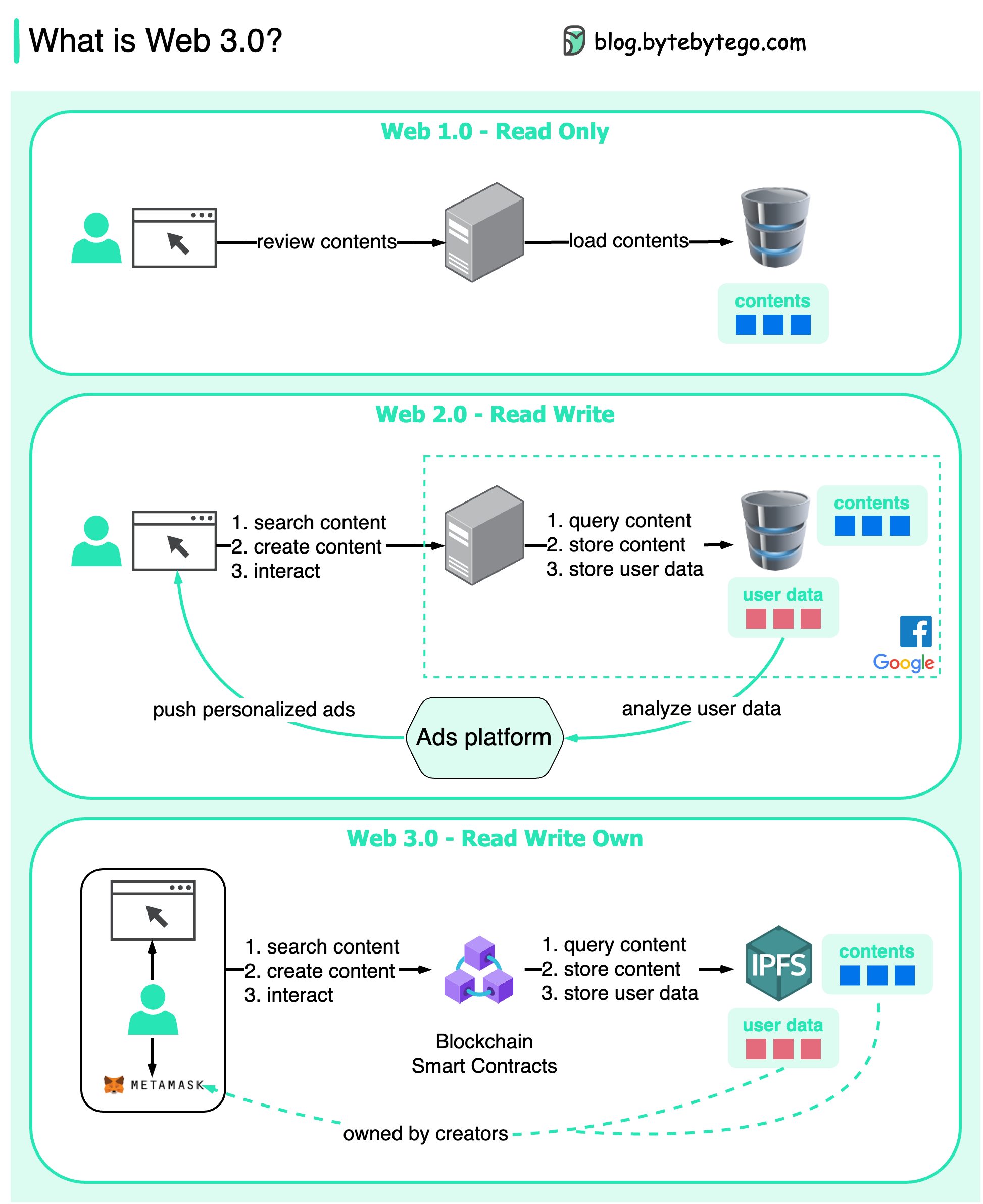Explore Web 3.0: ownership, decentralization, and ad-free potential.
The diagram above shows Web 1.0/Web 2.0/Web 3.0 from a bird’s-eye view.

Between 1991 and 2004, the internet was like a catalog of static pages. We can browse the content by jumping from one hyperlink to another. It doesn’t provide any interactions with the content.
From 2004 to now, the internet has evolved to have search engines, social media apps, and recommendation algorithms backed apps.
Because the apps digitalize human behaviors and persist user data when users interact with these apps, big companies leverage user data for advertisements, which becomes one of the main business models in Web 2.0.
That’s why people say the apps know you better than your friends, family, or even yourself.
The idea has been discussed a lot recently due to the development of blockchain and decentralized apps. The creators’ content is stored on IPFS (InterPlanetary File System) and owned by the users.
If apps want to access the data, they need to get authorization from the users and pay for it.
In Web 3.0, the ownership change may lead to some major innovations.